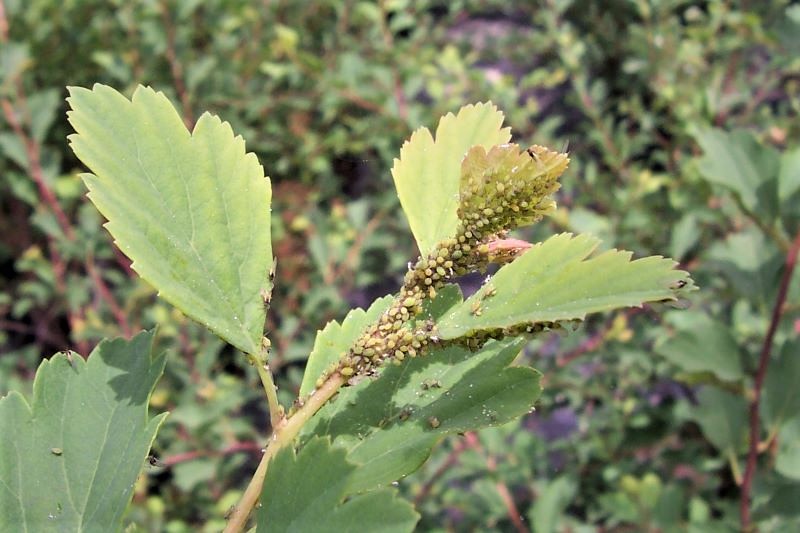Aphids (Aphidoidea)
GDD Window (base 50): 7-120
Overview:
- Small, 1/16″ to 1/8″ long, soft-bodied, pear-shaped insects
- Range from pink, green, blue-green, black, brown, tan, to yellow in color. May be covered in a fluffy white wax.
- All adults have cornicles, and long, slender mouthparts
- May or may not have wings
- Excrete sticky honeydew, which can then grow sooty mold
- Congregate on new growth, usually on the stems or leaves
- Attracted to overly fertilized growth and stressed plants
- Host plants: Wide range of plants, including vegetables, fruits, flowers, and ornamental plants
- Aphelandra, Dieffenbachie, Gynura, Hoya, and Schefflera
Management:
Cultural Practices:
- Beneficial insects: lady beetles, lacewings, syrphid fly, parasitic wasps
- Companion plantings: dill, coriander, yarrow, fennel, garlic, chives, marigolds, nasturtiums
- Traps: Sticky traps
- Destroy weeds near planting
- Avoid over-fertilizing with nitrogen
- Heavy sprays of water
- Prune infested twigs and branches
Materials:
- Contact insecticides:
- Avermectins [6]: Abamectin
- Pyrethroids [3]: –thrins
- Systemic insecticides:
- Tetronics [23]: Spirotetramat
- Neonicotinoids [4A]: Imidacloprid, Thiamethoxam, dinotefuran,
- Organophosphates [1B]: Acephate
- Diamides [28]: Cyantraniliprole
-
Considerations:
- Will harm non-target species and beneficial insects
Biorationals:
- Insecticidal soaps
- Horticultural oils
- mineral oil, neem oil


Disclaimer – Materials do not cover all possible control scenarios and are intended for licensed professionals. Tradenames do not imply endorsement and are used as examples. You must strictly follow the label for each compound prior to use. Rutgers is not responsible form is used materials or damages thereof. The label is the law. Labels will provide detailed information on use and restrictions. Additionally, application intervals, compatibility, surfactant use, PHI, PPE, important and other key information is described in detail. Always discuss treatments with your local agents. Note: Neonicotinoids can only be legally applied in commercial agriculture settings by licensed applicators. Guidelines and recommendations made in this presentation are specific to the state of New Jersey.
